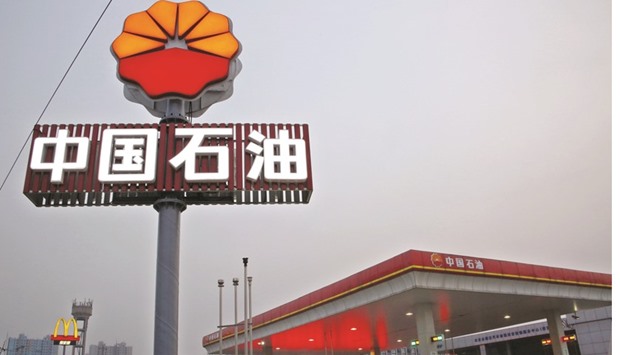China’s investment, factory output and retail sales all grew more slowly than expected in April, adding to doubts about whether the world’s second-largest economy is stabilising.
Growth in factory output cooled to 6% in April, the National Bureau of Statistics (NBS) said yesterday, disappointing analysts who expected it to rise 6.5% on an annual basis after an increase of 6.8% the prior month.
China’s fixed-asset investment growth eased to 10.5% year-on-year in the January-April period, missing market expectations of 10.9%, and down from the first quarter’s 10.7%.
Fixed investment by private firms continued to slow, indicating private businesses remain sceptical of economic prospects. Investment by private firms rose 5.2% year-on-year in January-April, down from 5.7% growth in the first quarter.
“It appears that all the engines suddenly lost momentum, and growth outlook has turned soft as well,” Zhou Hao, economist at Commerzbank in Singapore, said in a research note.
“At the end of the day, we have acknowledged that China is still struggling.”
Reuters reported yesterday that China’s banking regulator has sent an urgent notice to banks telling them to clear bottlenecks holding back lending to private firms.
In its data announcement, the statistics bureau said “Because the total amount of private investment is relatively large, its continued slowdown could restrain stable growth, and requires a high degree of attention.”
Retail sales growth in April, which captures both private and government purchasing, rose 10.1% on an annual basis, slower than expected. Analysts had forecast sales would rise 10.5% on an annual basis, the same percentage increase as reported for March.
It was upbeat March data that sparked hopes China’s economy was picking up in the wake of a more than year-long blitz of fiscal, monetary and administrative stimulus measures. A recovering property market has also boosted demand for raw materials, giving a boost to long ailing heavy industries such as steel mills.
But much of the data on April, which included weaker-than-expected exports and imports, plus soft factory activity surveys, continued to underline lingering weakness in the broader economy.
The only bright spot was investment in housing, which grew 9.7% in April from a year earlier, according to Reuters calculations, keeping even with March’s pace.
China’s economic growth has cooled to 25-year lows, weighed down by a combination of weak demand at home and abroad, factory overcapacity and increasing amounts of debt.
The government has made reducing the capacity glut one of its top priorities, and has vowed to put “zombie” companies out of business. But economists expect authorities to move slowly to avoid a sharp jump in unemployment.
China, the world’s fourth-largest oil producer, pumped 5.6% less crude year-on-year in April, official data showed, as oil firms struggled with cost pressures with crude prices hovering around $40 a barrel.
Data from the National Bureau of Statistics released yesterday showed China produced 16.59mn tonnes of crude oil last month, or about 4.04mn barrels per day (bpd), the lowest rate since July 2013 on a daily basis.
A global oil supply overhang has eased this month thanks to unplanned outages caused by wildfires in Canada and further losses in Nigeria and Libya.
Deeper production cuts in China may give the market another boost.
Production in the first four months was down 2.7% over the same year-ago period to 68.14mn tonnes, or about 4.11mn bpd.
PetroChina, the country’s top producer, recorded a 0.2% drop in oil and gas production in the first quarter and Sinopec scaled back domestic crude production by 10.35% in the same period, companies said in April.
Offshore specialist CNOOC Ltd, however, delivered a 5.1% rise in total net oil and gas production in the first quarter over a year ago, thanks to new Chinese offshore fields.
Natural gas output last month rose 5.6% on the year to 10.6bn cubic metres, with production up 5.3% in the first four months, the data showed.
Consumption of the cleaner fuel has regained some pace after the government cut wholesale city-gate prices last November.
National crude throughput gained 2.4% in April versus a year earlier at 44.75mn tonnes, or 10.89mn bpd.
That compared to March’s runs at 10.58mn bpd.
Throughput in the first four months rose 2.9% on year to about 10.69mn bpd, according to the data.

PetroChina’s petrol station in Beijing. The Chinese firm recorded a 0.2% drop in oil and gas production in the first quarter.
